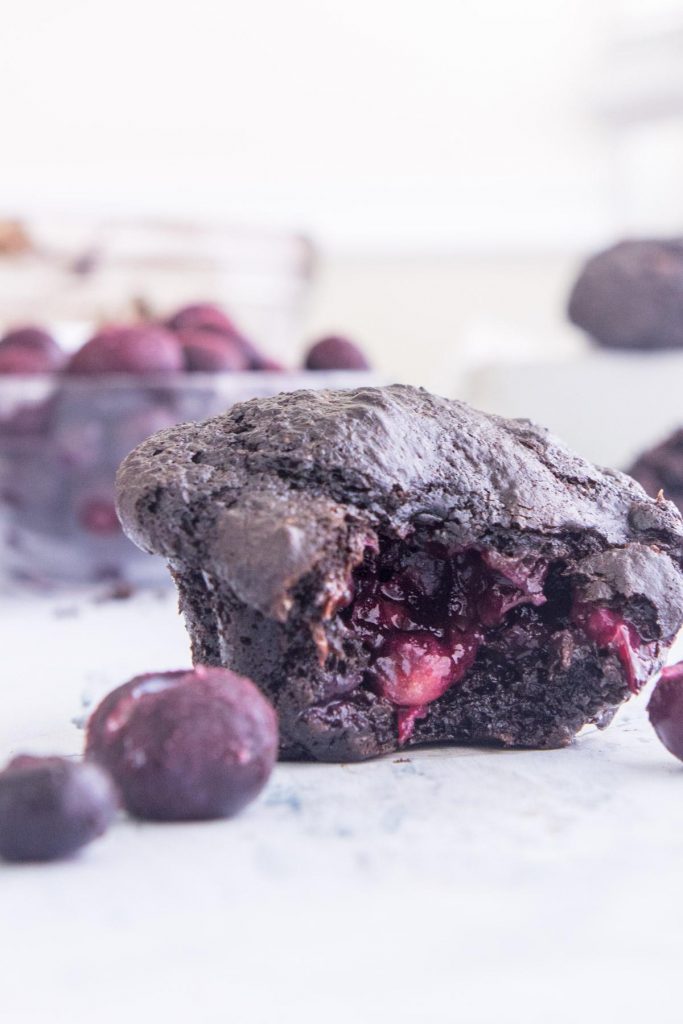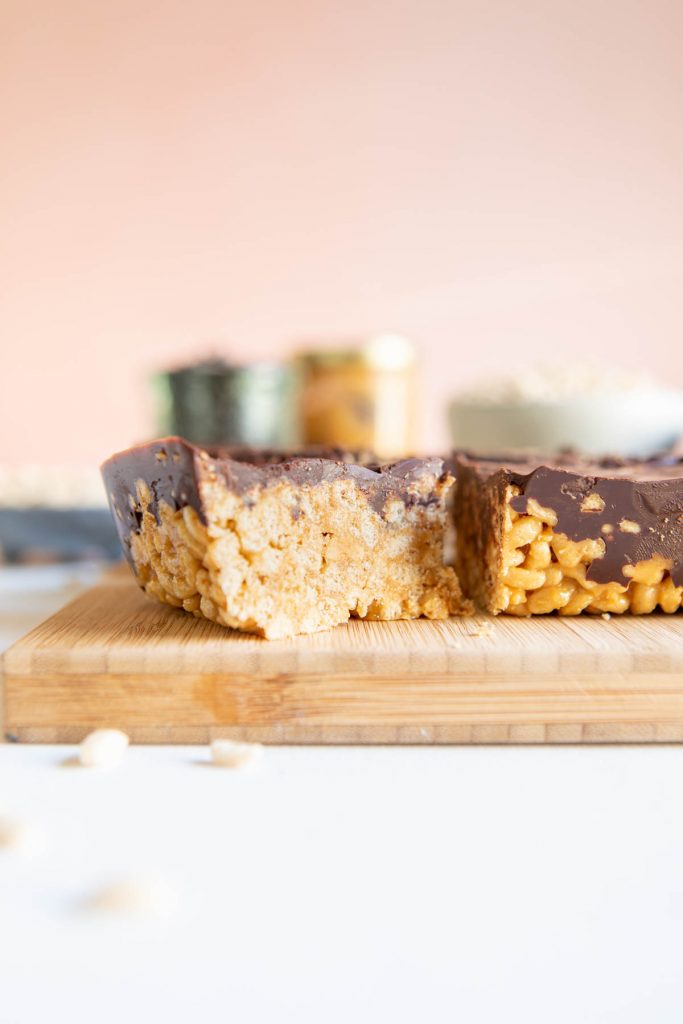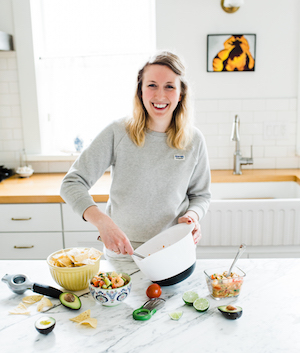
Welcome to Part 3 of our Food Photography Series! Rebecca has answered your questions and has a ton of great advice.
This week, I’m covering lots of information. I’ll answer your questions and share my best equipment advice.
Q&A
- What’s the most common mistake you see amateur food photographers make?
Bad lighting. Don’t use overhead lights and start with natural light AKA set up your scene right next to a window. It’s free, and you learn a lot from working with it. Refer to last week’s post to learn how to make the most out of the light you have.
- Any tips for food styling? I’ve noticed that smaller portions tend to look better, along with white or black plates. Anything other little tips that make a big difference?
Yes, mostly use smaller plates/bowls. You want your food to really fill up the plate. I know fancy restaurants serve small portions on large plates, but that styling doesn’t usually translate well to food photography, especially if you’re a beginner. Appetizer plates are best, that’s what I have the most of. As far as color of plates, I highly recommend starting out with neutral color props. You don’t want your props to distract from your food, or your prop colors to clash with the colors of your food. If you’re artistically inclined, get yourself a color wheel and choose complimentary colored props to go with your food. Instead of buying fun color props, experiment with what you have on hand, see how it looks to you, and buy neutrals if you need any more. - Your series is coming at a really great time for me, I’m a recent grad and new RD and I just started my first nutrition Instagram account focusing on backpacking & camping meals (@thebackpackdietitian). I choose to make an Instagram account only (and not a blog) because I’m intimidated by the amount of time a blog could take and I have no experience with website design. I love writing and recipe creation but am worried that it might take the fun out of cooking if I feel like I constantly need to be “putting out content.”
I’m wondering if you could comment on the number of hours you spend per week on your online content, and if/how you believe your blog has helped you build a clientele. –Maddie French
Great question, Maddie! I think this is super common for people interested in blogging. I’ll be honest, blogging seems way easier than it is. I’ve worked hard to develop systems to be efficient, I probably spend 20-30 hours/month recipe testing, photographing, editing, writing, and planning out all my blog content. I do it all together (batch my work) instead of one post each week. To answer your other question, ask yourself why you would create a blog/what you would want to get out of it. If you want to start a private practice, if you want to be a food photographer, or if you want to create recipes for a living, definitely consider it. But if you want to do it for fun, and have another job, I bet an Instagram account, like you have would be great!
- Do you have any recommendations for taking photos on an iPhone? Or any recommended iPhone settings?
Yes! Phones these days have awesome cameras! You’ll use the same principles for lighting, composition, etc, just use your phone. To make the most out of using your phone, find a window with really great light, or go outside and stand in the shade of a tree. Your phone may not be as sensitive to light as a DSLR camera. Generally, overhead shots work best for iPhone photography. If you have portrait mode on your phone, play around with ¾ and straight on shots. Portrait mode will blur out the background like you see in lots of food photos. If you don’t have portrait mode (I don’t have it on my phone), there isn’t a great way to get that nice background blur, the apps out there aren’t good. So stick to overhead shots.
- What are your go-to styling props? And any recommended props for someone just starting out?
Refer to question 1. Smaller props. And go through your cabinets, you’ll probably find interesting plates, bowls, and other props. I’ve written a couple photography articles on low cost props. Check them out here. If you do need to buy some props, check out local thrift stores, you can find lots of great plates and props there. I’ve been buying more props from my local Deseret Industries, each is ~$1.
- Any recommended resources for starting a food photography business? How did you first start getting clients?
There are lots of places to get clients. It depends on what kind of clients you want to work with. I’ve worked with food bloggers, food brands, food commodity boards, and organizations with recipes on their websites. You definitely need to create an online portfolio with a number of your photos on it. I’ve had some brands reach out to me, but most of my work has come from me pitching to them. It’s uncomfortable, and you get rejected A LOT, but how else is a food brand or blogger going to know what you have to offer? Find their social media accounts and reach out to them or join food photography groups on Facebook and keep an eye out for bloggers asking for help.
What You Need to Take Beautiful Food Photos
Now onto equipment! Having the right equipment will make capturing the perfect image much easier and enjoyable. But that doesn’t mean that you have to spend hundreds or thousands of dollars on equipment to get a great shot. There are a few household or low-cost items that will make a huge difference in your food photography game. I’ll be sharing those with you today.
I have 2 categories of tips here. One is photography equipment, the other is equipment to get the right light. Both are essential, and neither are especially expensive.
Photography Equipment

- Some kind of camera. If you have a DSLR camera already, use that, but if not, the camera on your phone is a great place to start. Seriously. I remember my first flip phone with a camera. Man, that camera was TERRIBLE. Phone cameras are anything but terrible now. Use your regular camera settings to take overhead shots (birds’ eye view) or if you have portrait mode, you can take a photo on the side or at an angle and have the background blurred out. Read my article on using your iPhone for food photography.
If you have access to a DSLR camera, or want to buy one, that’s exciting! A DSLR camera is, well, a big camera. You probably don’t care about the definition, but it’s one that you see professional photographers use. It’s not a phone or a small point and shoot camera. A DSLR camera allows you to adjust how much light you let into the sensor, how much of your scene is in focus, and the quality is usually much better. DSLR cameras can be a couple hundred dollars to thousands of dollars. I don’t have camera suggestions. There are lots of great options out there, and vary based on your needs. Pictureline, a local Utah photography shop, is a great place to go. They’re knowledgeable, helpful, and don’t treat you like an amateur photographer who doesn’t know anything, even if that’s you.
- Editing Software. Your photos won’t come out of the camera absolutely gorgeous, it takes a bit of editing to get them to really pop. Here are a couple levels of software you can use: your camera app (most have simple editing software), a low-cost camera app like Snapseed, VSCO, or Afterlight. Or, what a lot of photographers use–Adobe Lightroom. It’s a part of Adobe Creative Cloud with Photoshop, Premiere Pro, and their other software. There’s also a Lightroom app (which is free!).
- Tripod. If you’ve got shaky hands like me, a tripod is a necessity. You can get a simple tripod for your phone or a bigger one for your camera. Mine has an articulating arm so I can take overhead photos which is super helpful but not necessary. Try holding your camera and if the photos keep coming out blurry, you may want to get a tripod. If you’re not ready to buy a tripod, I suggest bracing your elbow against your side or stomach while taking a photo. This is a tip I learned from Sarah of Broma Bakery and Foodtography school. It’s a simple trick, but can really steady your arms.
- (BONUS) Lenses. Not a necessity, but if you go for a DSLR camera, and have some money for a new lens, get a 35 mm or 50 mm lens to start. Personally, I have a 35 mm fixed lens and a 24-75mm lens that I’m obsessed with. Kit lenses do work, Joanie of The Bite Shot did a few videos on using a low-cost camera & kit lens. Her photos are gorgeous with this inexpensive equipment.
Next, I want to talk about lighting. Getting the lighting right will make your photos look instantly better. This is where I start when I teach people food photography. A bright, well-lit photo makes a bigger positive impact than anything else.

Before I share what you should get, I’d like to share a tip on what to not get. I get questions about light boxes all the time. They seem like a fantastic option, plus they’re not too expensive. But I want to share my experience borrowing one when I started out. I HATED IT. First of all, it was kind of small and even more limiting on the angles I could use to take photos. Second, the light in them is really harsh. Your food will look really unnatural and it’s hard to add diffusion to the small box. Just don’t go that direction. I’ve got a few pieces of equipment that are easier to use, less expensive, and will get you way better lit photos than a light box. Also, this is equipment that I bought when I started years ago, and still use to this day.
Lighting Equipment
- A Window. Natural light is the easiest when you first start out. Push a table up to your window and place your food on that table. The best time to take photos using natural light is usually from ~11-3pm. Not sure which window is best? Experiment! Take photos at different windows and at different times of the day. See which looks the best and stick with that window.
- A White Shower Curtain. You’ll need something to diffuse the light coming in from the window so it’s not harsh like lightbox light. A white shower curtain tacked to your window is perfect, cheap, and does a great job softening your light. I also have a white bed sheet that I use on really bright summer days (diffusion breaks up the light rays so your food looks soft and enticing. Harsh light can create distracting shadows and isn’t so flattering on your food).
- A White Foam Board (or two). You’ll use these to bounce light back onto your photo subject. It’ll brighten up your photo and make your food look even more appetizing. Place it on the opposite side of your food from your light source (ex: foam board facing your food, food, then window on the opposite side as your food)
Thank you for all your questions! Next week in the the 4th and final part of my Food Photography Series, I’ll be sharing some real-world examples of how a handful of RDs are using their photography skills.

— Rebecca Clyde MS, RDN, CD is a Salt Lake based dietitian, food photographer and owner of Nourish Nutrition Co., as well as the current UAND Membership Chair.
